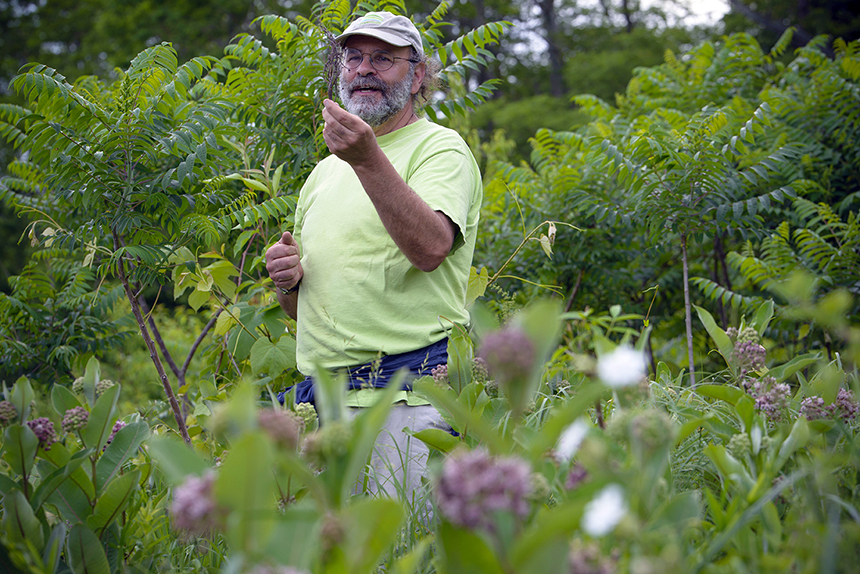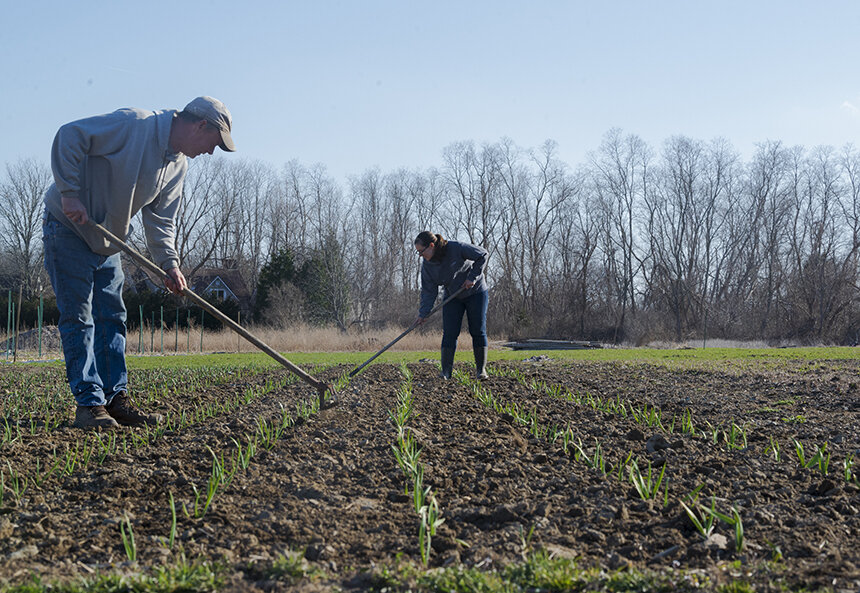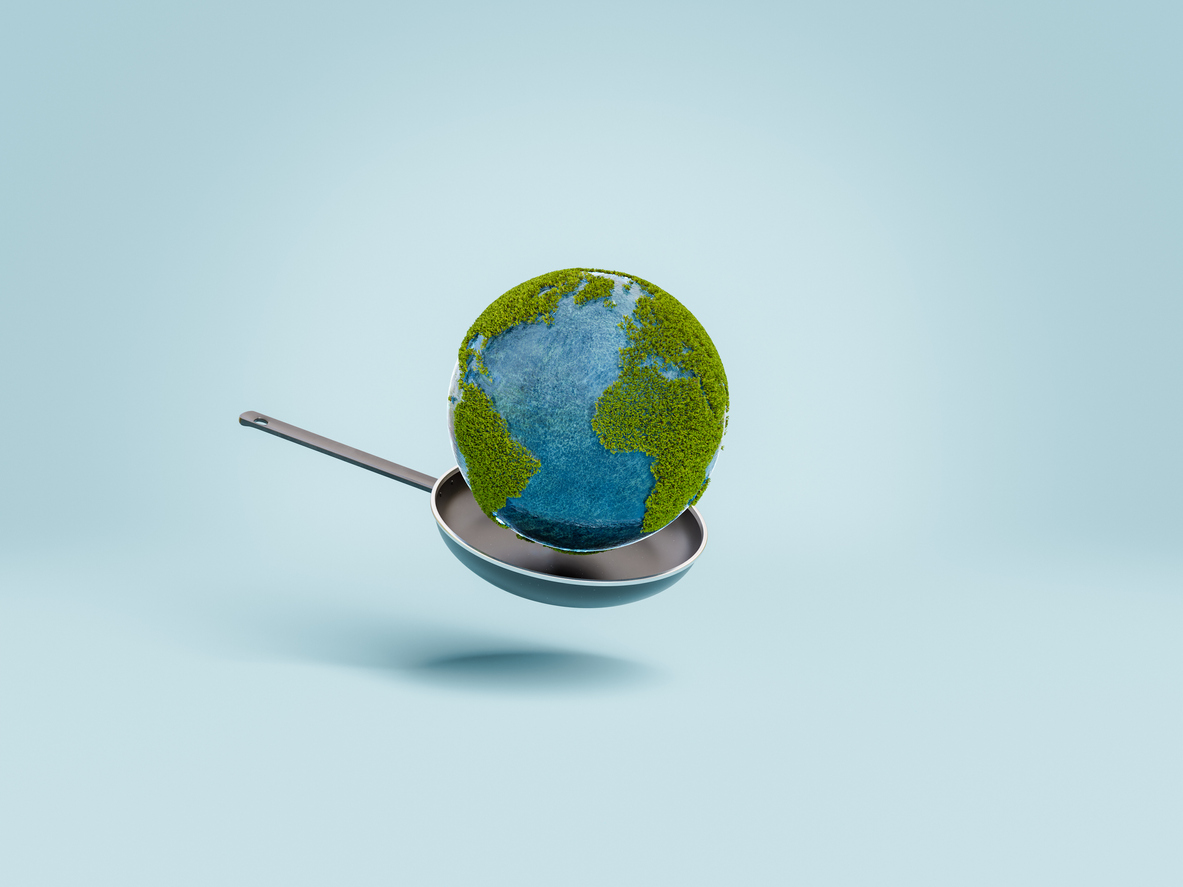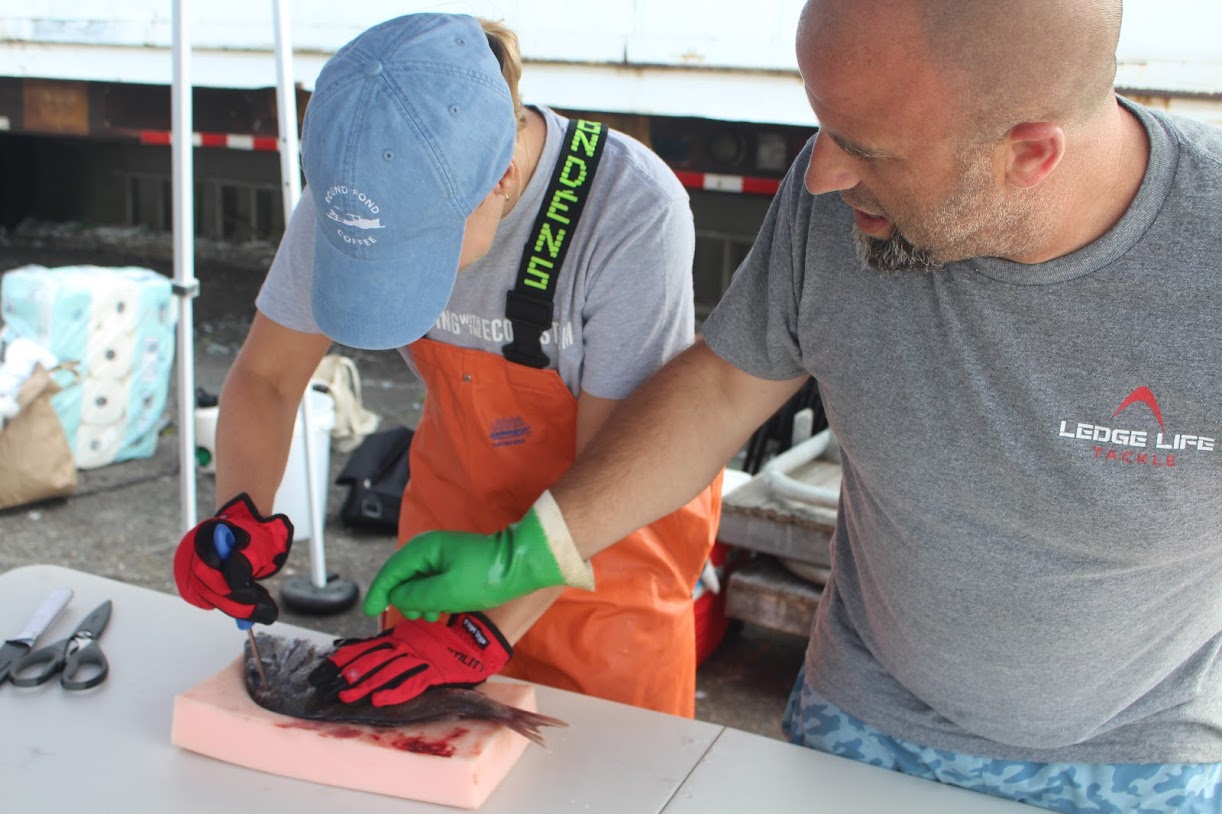Hungry for Something Different? Go Wild
Master forager shows you what types of wild plants can be harvested for food
June 28, 2015
BRISTOL, R.I. — Along stretches of the 14.5-mile East Bay Bike Path a tasty treat strangles native vegetation and crowds out views. There’s a solution to this growing — no pun intended — problem and it doesn’t involve chemicals. All that is needed is a knife and fork.
Japanese knotweed is a robust perennial herb that emerges in early spring and forms dense thickets that can grow up to 9 feet high. Large colonies often exist as monocultures, reducing the diversity of plant species and altering ecosystems. Reproduction from horizontal underground stems, even small fragments of them, gives this weed its dominance. Once established, it’s difficult to remove.
This invasive plant is commonly found in moist, open habitats such as riverbanks and disturbed wetlands and along roads and bike paths. Basically, Japanese knotweed is everywhere.
“Japanese knotweed is at the top of the invasive species list. It’s nasty and it takes over,” said Russ Cohen, a longtime staffer for the Massachusetts Department of Fish & Game’s Division of Ecological Restoration/Riverways Program. “It’s also yummy. Tastes like rhubarb.”
Cohen would know. He’s made delicious pies with the vile weed. He is also an author and expert forager who has been eating wild plants for decades. He leads tours all across New England, even in cities, pointing out food that has sprung up without human help. His tours teach people about foraging etiquette, impact and responsibility, and how to distinguish edible plants from poisonous ones. He tells people not to eat stuff that tastes bad, because poisonous stuff usually tastes, well, bad. He said that principle doesn’t apply to wild mushrooms.
He stresses that seasonality is important. “We’re detached from seasonality because we can go into a grocery store anytime of the year and buy whatever we want,” he said.
But it doesn’t work that way in the wild. For example, Japanese knotweed — its stringy stalks need peeling before eating — is best harvested in April. After that, when it grows big and starts resembling bamboo, it’s too tough and bitter. He also advises potential harvesters to choose sites carefully, such as those not frequented by dogs looking to relieve themselves and away from heavy traffic.
“Don’t harvest Japanese knotweed shoots growing near a Dumpster at an auto-body shop, or in an open space that may have been sprayed with chemicals,” Cohen said. “It’s not hard to find. There’s plenty of it around.”
Before leading a June 17 tour at the Audubon Environmental Education Center, Cohen shared some juneberry he had picked earlier that day along the Charles River in Boston during his lunch break.
In fact, if you ever bump into the Arlington, Mass., resident, he’ll probably be carrying a foraging basket, and he’ll likely share whatever is inside.

Cohen said Rhode Island alone is home to more than 90 species of edible wild plants, some of which are more nutritious and/or flavorful than their cultivated counterparts.
“Wild, edible plants are all over the place,” he told the dozen or so people who recently followed him for two hours. “They’re a mixture of native plants, weeds and invasives.”
That doesn’t mean foragers should be picking plants bare. In most cases, astute foraging will not hurt an ecosystem, Cohen said, but foragers must be aware of the role plants, especially native ones, play. Overpicking, for instance, could lead to local extinction. Raking the woods searching for delicious treats could alter the humidity of the forest floor and negatively impact the habitat’s ecological balance.
Cohen noted that picking most wild nuts and berries has little impact on the plants, their habitats or the ecosystem. There are exceptions, however. Some native species berries serve an important ecological role. The high-calorie berries of spicebush, for example, are relied upon by migrating songbirds to fuel their southward migrations, according to Cohen. He said it is incumbent upon foragers to show restraint, and leave plenty of those berries on the plants.
Digging up plants or stripping off leaves causes stress and has a big impact, he said. Endangered species are off-limits, but, he noted, there are few species in Rhode Island or Massachusetts that are both edible and endangered.
Of the some 70 invasive species in Rhode Island, about 20 are edible, he said. “Pick as much of these plants as you like,” Cohen said. “It’s guilt-free foraging.”
He stressed, however, the importance of not spreading these plants around when harvesting them. “Don’t spit the seeds of invasive species onto the ground,” he said. “Like a responsible dog owner does, bring a bag.”
He also spoke of concerns he often hears about the impact human foraging has on wildlife.
“There’s not a 100 percent overlap between humans and animals,” Cohen said. “Many animals can eat poison ivy. Don’t try it. Animals and humans have different taste buds and different digestive systems.”
For many, milkweed tops that list of foraging concern. Monarch butterflies only lay eggs on milkweed, which has rapidly disappeared from their range in the past few decades. In fact, the United States has lost nearly 170 million acres of monarch habitat east of the Rocky Mountains since 1996. It’s no coincidence that the monarch population has plummeted from relative highs during the 1990s, in large part because of habitat loss and a changing climate.
Rhode Island is home to common, swamp and orange milkweed, all suitable monarch habitat. The only variety that is edible is common — it has very broad leaves — and it is delicious, according to Cohen. The plant has four edible stages — leaves, stem, flowers and pods — and harvesting the pods, he said, has little impact on the butterfly’s life cycle.
While he doesn’t believe human foraging has had much of an impact on milkweed’s decline — he largely blames pesticides such as Roundup — he checks any common milkweed for eggs and monarch caterpillars before harvesting. He also makes sure to help spread the plant’s seeds.
It did concern him, however, when he recently saw wild common milkweed on a restaurant menu in Portland, Maine. “If it sells well, there will be copy cats, and the impact would be quite large if that trend grew,” Cohen said. “Commercialization would change people’s relationship to the plant because they would see dollar signs.”
His concerns about wild plants being on restaurant menus goes beyond milkweed. He said he has seen the harm done to native species, their sensitive habitats and/or wildlife that rely on them by “unscrupulous, commercially driven harvesting to meet the demands of chefs and produce markets.”
“Fortunately, there are many tasty and abundant non-native species,” he said, “and I hope restaurants seeking to add wild plants to their menus will focus on those instead of natives.”
Among the wild edibles Cohen grades as the tastiest and the best for foraging are dandelions, juneberry, black raspberry, fox grape, curled dock, mulberry and black locust, which, like Japanese knotweed, is an invasive.
When he retires from the Massachusetts Department of Fish & Game on June 30, Cohen hopes to use of some of this free time to encourage more people to plant edible plants.




Hi Frank – thanks for this article. I just wanted to reiterate the statement I provided
on the walk that the "with a few exceptions, poisonous plants taste bad" rule does NOT apply to mushrooms. Unfortunately, the flavor of some of the most poisonous species of mushrooms provide absolutely no indication of their toxicity. You could have a delicious mushroom meal of them and be dead several days later from liver and/or kidney failure. (That said – I happily forage for edible wild mushrooms too, but focus on the species that are easily distinguishable from poisonous look-alikes.)
Also – re the phrase in the article "Endangered species are off-limis…", I would have worded that more broadly to say that no part of any plant that is "listed" by a state Natural Heritage Program should be considered OK for foraging. Here is a link to the RI rare plant list: http://rinhs.org/wp-content/uploads/2012/05/rirareplants_2007.pdf
Thanks again for the article.
— Russ Cohen
When is the next edible plant walk? This sounds like a great event and I’m sorry I missed it. We have a ton of knotweed where we live.
My granddaughter and would like to take you next tour to gain knowledge of living off the land